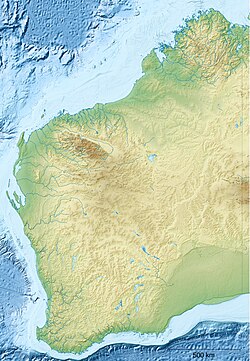| Edel Land National Park | |
|---|---|
 The Zuytdorp Cliffs that border Edel Land | |
| Location | Western Australia |
| Nearest city | Denham |
| Coordinates | 26°09′05″S113°09′18″E / 26.15139°S 113.15500°E |
| Governing body | Department of Biodiversity, Conservation and Attractions |
| Website | https://parks.dpaw.wa.gov.au/park/edel-land |
Edel Land National Park is a proposed national park located in the Gascoyne Region of Western Australia, located 670 kilometres (420 mi) north of the state's capital Perth. [1]
The national park is also a part of the Shark Bay World Heritage Site and lies south of Steep Point, which was named in 1697 by Willem de Vlamingh calling it Steyle Hock when he was anchored adjacent to the cliffs at the southern side of Dirk Hartog Island. [1] [2] [3] [ full citation needed ]

